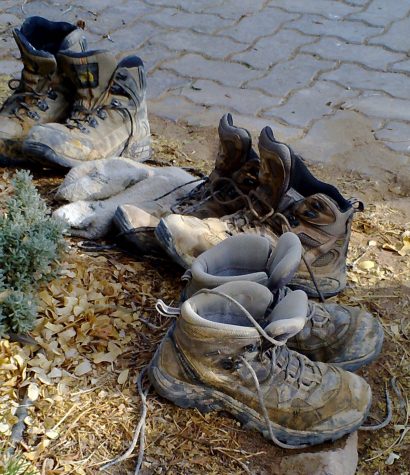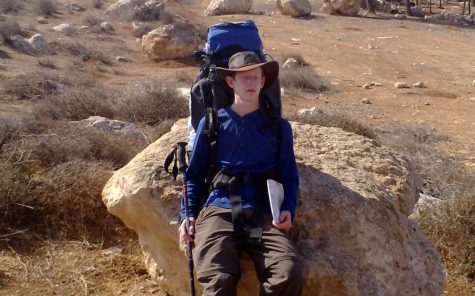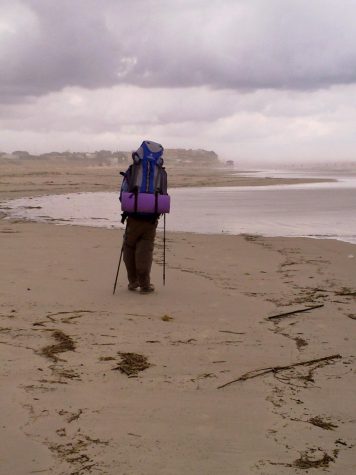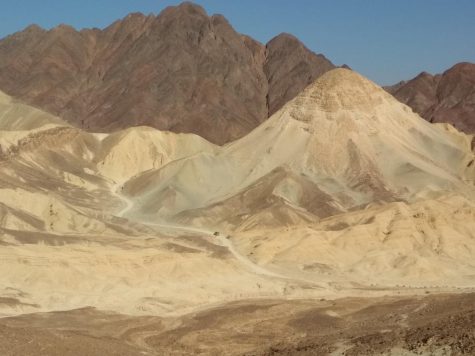11 things to know before hiking the Israel Trail
Take it from this veteran of this magnificent and sometimes challenging 637-mile trail: The right preparation can make or break your trek.
Published September 2, 2021
(Israel21c) – It’s that time of year, when we look forward to the temperatures dropping as well as the number of Covid cases. So the possibility of hiking the Israel Trail, the country’s longest at approximately 1,025 kilometers (about 637 miles), is an especially enticing escape.
Listed by National Geographic as one of the best long-distance hikes in the world, the Israel Trail includes a wide range of landscapes from rushing streams and sandy beaches to rugged desert canyons and rolling dunes.
You can stretch not only your muscles but your mind, camping out at the end of a long day in stillness under vast starry skies.
ADVERTISEMENT
To get the most out of the shvil, as it’s known in Hebrew, read on for 11 tips that helped me when I hiked it with my son and husband.
1. Get in shape
The trail covers some tough terrain. To prepare, I went on shorter hikes, exercised on treadmills and elliptical machines, and practiced carrying a backpack filled with weights. I had a far easier time adjusting than my tour guide husband, who didn’t have the time to work out. While he suffered from pain and soreness in the first several days of hiking he eventually adjusted, thanks to tip #2.
2. Pack the right mindset
You will experience moments of exhaustion, pain, boredom, perhaps even despair. That’s totally normal. For every 10 hikers that set out to do the trail at one go, only three or four make it the entire way.

ADVERTISEMENT
While some folks don’t finish due to injuries, many drop out due to unrealistic expectations—over the distance they expect to cover in a day, their level of fitness, or the “fit” of their companions, to mention just a few.
Even if you don’t plan to do the entire trail, you’re still likely to ride a mental rollercoaster. It helps to know why you’re setting off on this adventure and what’s most important to you. We met post-army youth who wanted to explore their own country first before going abroad. Others were looking to get away from it all, or to “find themselves.”
We did it to raise money for ALS research after my mother-in-law died from the disease, as well as test our personal limits. So when we had our breaking points (luckily each of us at different times), we were able to keep going when we thought we couldn’t.
3. Invest in your gear

The second day of the hike we met a fellow with terrible blisters. His shoes were cheap and didn’t fit well. Nothing will ruin a hike faster than lousy boots or a pack that doesn’t offer the proper support.
Quality sweat-wicking socks, hiking poles and raingear— including a good tarp or lightweight tent (especially if you’re hiking in the rainy season)— are highly recommended.
4. Take enough water
In a country that is over 50 percent desert, you can go two to three days in the south without places to refill your bottles. Four to five liters per day is typically enough in the north for drinking and cooking needs.
South of Arad, we hauled six liters and made sure to cache enough food and water, including extra for washing off the dirt and dust. There are companies you can hire to do this. For those intrepid souls who are willing to carry a lot of extra weight or make large detours, read how to hike without caching water.
5. Lighten your pack
Given the need to haul all that water, do whatever you can to decrease the weight of your pack. A heavy pack can turn your hike into an extremely unpleasant slog or worse, lead to stress fractures. When in doubt, do without.
6. Spoil yourself
Given the intensity of hiking eight or 12 hours a day, small and large treats can make a huge difference.
I bought good chocolate at every opportunity. We packed dried shitake mushrooms and tomatoes and some exotic spices to add to our daily stew and cached foil packs of Indian food and a bottle of red wine as an indulgence after an especially tough section of the trail.
Unwind at the end of the day with a good paperback or lightweight instrument like a recorder or harmonica. For those with deeper pockets, the occasional cafe or restaurant, or room in a hotel or hostel is a lovely luxury.
7. Rest

It takes about 45 to 60 days to hike the Israel Trail, on average. But allow yourself time, no matter what pace you choose, for days of rest. These not only allow your body to rejuvenate but also give you a chance to enjoy sunbathing on Tel Aviv’s beaches with a beer or mojito, wandering the alleyways of Jerusalem’s Old City and colorful markets, as well as exploring ancient sites like Masada and Tel Arad.
8. Stay with Trail Angels
Israel has a network of about 400 to 500 Trail Angels. Spanning all ages, cultures and religious beliefs, they offer a range of free services which may include comfy beds and hot showers to home-cooked meals and access to a laundry machine.
Located throughout the country in both urban areas as well as the most remote settlements, they provide a rare view into the kaleidoscope of Israel’s human diversity. You haven’t really done the trail until you’ve stayed with at least one Trail Angel, preferably many more.
9. Choose your season

There are two main hiking seasons: fall (late September through November) and spring (February to May). There are advantages and disadvantages to both.
In fall, most start in the north at Tel Hai, where the simpler terrain and logistics allow for easier acclimation to the challenges of the trail. The landscape tends to be more parched and colorless following the summer heat, but there is a striking finish by the Red Sea.
In the spring, most hikers start near Eilat, moving away from soaring desert temperatures. The first few days involve particularly challenging ascents when hikers’ muscles haven’t yet fully adjusted, but the plus is that the countryside is bursting with colorful wildflowers and grasses after the rains.

10. Prepare for the unexpected
No worthy journey ever goes exactly according to plan. All of our caches were broken into. Though the food was taken, the water was safe. After the first incident we made sure to pack extra supplies, just in case.
The fall we hiked was particularly rainy. We battled heatwaves, storms and floods. While in the north weather may be just a nuisance, in the south things can turn deadly, with flashfloods tearing through chute canyons or unexpected heat waves threatening hikers with sunstroke. Be sure to check weather reports and with local authorities if in doubt.

11. Lean on those who have gone before
There are many great resources to help you plan your trek, including Jacob Saar’s Red Book, which includes detailed topographical maps and suggested daily itineraries. Other excellent resources are The Israel National Trail and WikiTravel.
For those who prefer someone else to handle all the logistics, Walk About Love is a great option. They also offer the flexibility of hiking section by section. You can choose to walk with others or solo during the day and share stories and a meal with the group in the evening.
Jerusalem resident Tzippi Moss is a life coach and psychotherapist at Inner Alchemist Coaching.
Follow her on Facebook here. Moss’s book, Angels & Tahina (paperback with photos), can be ordered by contacting [email protected]. The e-book with photos and paperback without photos are available on Amazon.














